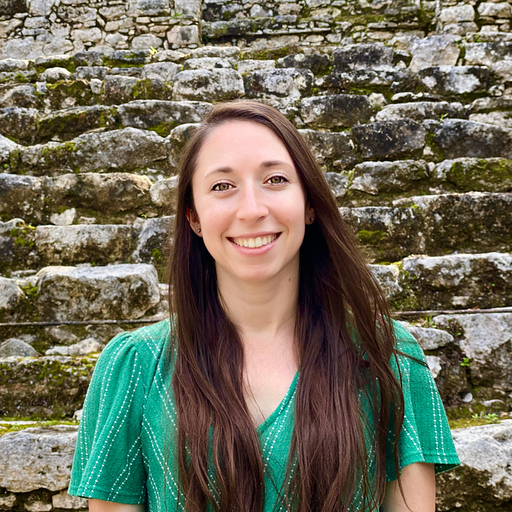June 28, 2021
 by Harper Lieblich / June 28, 2021
by Harper Lieblich / June 28, 2021

One of the most outdated phrases in the professional lexicon is, “It’s not personal, it’s business.”
We’re long past the era of businesses keeping customers at arm’s length – or at least we should be. The reality is that in today’s hyper-connected and hyper-competitive world, the key to winning people over lies in getting personal.
Think about your own habits, and the products you just can’t imagine life without. What sets those specific products apart? Why do you keep coming back time and again?
Most likely, the folks who created those products anticipated a specific need or desire you have well, such as a particular functionality or utility. They built the item with someone like you in mind. Just as importantly, they made it easy and straightforward for you to use, keeping you loyal to that product instead of hunting for an alternative. You enjoy the user experience, and you probably feel like this product slots perfectly into your life.
That satisfied feeling you have is the result of human-centered design (HCD) – and if you haven’t embraced this concept yet in your own business, it’s time to start.
Human-centered design is the highly empathetic philosophy of making the end-user the central focus of your work throughout the process of creating a product or service. It requires that you seek to understand your customer’s needs and desires first, and that you think deeply about how they’ll interact with your product through every step of their engagement. HCD aims to build a product that will seamlessly integrate with a user’s life.
As an example, let’s flash back to the 1988 movie “Big,” starring Tom Hanks. His character, Josh, finds himself in a boardroom watching a product developer explain a new prototype of a toy that turns from a building into a robot. The product developer spouts off demographic information, market share stats and big revenue numbers. He thinks he’s done his homework.
But Josh is actually a 12-year-old boy trapped inside a grown man’s body. So he raises his hand and says, “I don’t get it…What’s fun about that?”
No one at the fictional MacMillan Toy Company had bothered to ask a child what he wanted from this new toy, or whether he enjoyed any of its prototypes. They relied on their boardroom pitches and insider metrics to guide their process, they centered on their profit goals, all while overlooking the most basic desires of their hoped-for customer.
Does that sound familiar?
Most of us have probably been in a similar meeting at some point in our lives. Maybe we played the role of Josh, confused at an obvious oversight. Or maybe we were like the other folks in that meeting, so certain we understood our customer and their needs even though we’d never really bothered to ask.
The phrase “human-centered design” is often used interchangeably with user experience (UX), and although the two concepts have an important relationship, they are two different things.
UX design is one practical application of the broader HCD philosophy. HCD includes the thorough process of researching the customer and their preferences, but UX is where we integrate everything we learned from that HCD research to guide what the customer sees, feels, or hears. In short, UX is about the tool itself.
For example, the goal of any company creating a new mobile app should be to make their app indispensable - users can’t imagine life without it. Let’s say you’re designing a new app for business travelers and want to apply good UX design. To do so, you’ll need to consider every aspect of the business traveler experience, anticipating their specific needs and building an app that can easily address those needs within the context of that traveler’s likely use cases and goals.
That could include:
All these features elicit an “of course, who wouldn’t want that?” sort of reaction. But it’s not a given that every travel app will incorporate these items, even if it’s what travelers themselves are asking for. Moreover, just including these features isn’t enough.
Utility isn’t the only essential part of good UX; ease of use is a fundamental component. The way information is presented is critical, which is why aesthetics matter in UX design. After all, what good is having cool features if users can’t navigate them due to poor layouts and confusing visual design?
UX design can be the difference between lasting adoption or swift rejection of an app.
A UX designer expertly focused on the true user experience is somewhat of a modern marvel. They’re providing design services for business and minding technical frameworks all while understanding the end users’ needs and anticipating user context.
Their tools include user-centered design research, design thinking, web prototyping, wireframing, web user interface design, storyboarding, visual design theory, and interaction design. They serve as advocates for the end-users of a product and are often very educated about those people. They have to imagine every possible user, in every possible scenario, as they create the product.
UX designers must also have the audacity to ask bold questions – of the right people – to create masterful design that solves the problems of the people actually using the product (and not simply the folks in a boardroom, à la our “Big” example earlier).
Being a human-centered designer means having a voice that offers informed, well-researched ideas and has a seat at the table to influence overall product strategy, not merely what button goes where. Their knowledge may even go beyond product to influence marketing and business development plans.

Every Thursday, we spill hot takes, insider knowledge, and news recaps straight to your inbox. Subscribe here
Because the concept of human-centered design seems so basic — of course we should be thinking about customers when designing products! — it can be difficult to understand what it means in practical terms. It really comes down to a shift in perspective.
Start by de-centering yourself and your company’s desires, and instead asking or rephrasing all your big questions from a user perspective.
Instead of asking, “How do we grow our product line by 10% in Q1?” flip the question to center your users by asking, “How can we help our customers sleep better at night?” This brainstorm will likely lead your team down a totally different path, and towards a plan that is ultimately stronger because it’s rooted in the real needs of your customers.
Let’s say your instinct is to ask, “How do we reduce our time spent answering customer support inquiries?” That might lead to building out more FAQ documentation or implementing an AI chatbot, so customers can resolve issues on their own and lessen the burden on your support staff. But the HCD approach would center on your user here, and instead have you ask, “In what ways are customers struggling with our product in the first place?”
HCD is a win-win; asking the latter version of this question is more likely to lead to a solution that both reduces the time burden on your staff and eliminates a pain point your customers are facing, which makes them far more likely to increase their loyalty to your product.
We’ll never know what customers really think until we ask them. This may sound obvious, but all too often we are so eager to dive into the weeds of our project that we forget to zoom out and ground ourselves in the reason for our work.
Talk to your customers, or your prospects. Invite them to tell you about their experience using your product; better yet, engage them in your prototype or beta stages, so you get their feedback early on when it can have the biggest impact. And it’s never too late to set up thoughtful surveys, build engaging focus groups, and solicit real feedback.
There are all sorts of ways to create a meaningful dialogue with your users, but however you choose to go about it, the key is to listen. These conversations aren’t the time to defend your design or over-explain why you chose to implement a certain feature.
Remember to de-prioritize yourself, even if the feedback stings or takes you in a direction you weren’t prepared for. If you truly listen with an open mind, you’ll be able to respond to user feedback by creating something wonderful for them, which will keep them coming back for more. HCD is win-win, remember?
Embracing human-centered design means understanding that not every human experiences the world – or your product – in the same way. Accessibility is defined as the ability for people who may have additional needs because of physical or cognitive conditions to make use of, or “access,” products and services that are generally available to everyone.
This means that people with hearing impairments may need audio and video to be captioned, while those with vision impairments may need content compatible with screen readers, including alternative text for non-text content. Some users may only be able to navigate an app or website via keystrokes, meaning that all functionality needs to be keyboard compatible, while clean and calm user interfaces can be essential for individuals with epilepsy or cognitive conditions.
These are only some of the considerations when designing for accessibility, and there are many more guidelines listed at the World Wide Web Consortium (W3C) accessibility initiative library. W3C’s Web Content Accessibility Guidelines (WCAG) offer helpful standards for making web experiences useful and beneficial to as many people as possible. These standards are constantly being revised and updated as technology grows more sophisticated.
Another upside to creating accessible products? These features don’t just assist people who have additional needs, they help everyone. Imagine trying to read your mobile screen under the glare of bright sunlight or airport lighting – increasing the screen contrast can help. And how many of us choose at some point to make the text size just a little larger?
A user may think only that it’s easier to read this way, but contrast control and font resizing are actually accessibility features that not all apps and websites make available yet.
Tip: Become well-versed in all things web accessibility to truly cater to all users.
Because human-centered design is an iterative process, continually maturing as it moves more mainstream, implementation is a continual practice. To start requires an open mind with a willingness to remain curious, having empathy for your end user, and making no assumptions.
According to IDEO, a California-based design agency and recognized leader in human-centered design, to learn what your customers really want, you must do two things: observe their behavior and put yourself in their shoes. When you stay connected to people’s behaviors and needs, you can design solutions to their problems.
Any successful implementation of HCD requires constant reflection throughout the entire design process. While it is iterative, the exercise is merely a framework that requires agility and the willingness to continually review progress and return to the drawing board when necessary.

Let’s take a look at the six phases to IDEO’s human-centered design process:
Here’s where the “watch and learn” practice comes into play. Whether your product is digital or physical makes no difference. Watch end users interact with it, look for facial expressions (smiles or grimaces.) keep an eye on roadblocks and general pain points. Whether through interviews, observation or immersion, you and your team can gather inspiration from meeting with the people you’re designing for.
Gather your team and brainstorm ideas based on your observations. Come up with as many suggestions as possible and keep asking “why.” Begin sketching out customer journey maps using well-developed personas. Why wouldn’t some click through or fill out that form? This isn’t a time to hold back on ideas just because you think they may be too unrealistic to implement.
Before investing time creating what you believe to be the solution of all solutions, develop a simple prototype for testing. This doesn’t even have to be a digital prototype; IDEO oftentimes creates cardboard prototypes to get user feedback as quickly as possible.
Now it’s time to take that prototype and put it in the hands of your end users. Does your solution solve their problem or is there more work to do? This input is tremendously valuable, as it will help you hone-in on your evolving design.
It’s game time. Take that valuable feedback and implement it. Each iteration is an opportunity to get it right. Continue to test, seek user feedback, and integrate until you’ve designed the ultimate solution.
You’ve prototyped, sought feedback, and made changes until you got it right. Now it’s time to release your design. And while it might seem like you’re finished, well, you’re never quite finished. It’s important to revisit steps one through six and continue to meet with your end-users, seek feedback, and implement changes that affect the company’s bottom line.
Simply put: Human-centered design is both the right way to treat people and good business. When businesses focus on HCD, they are more likely to gain loyalty from users, which converts quickly to long-term success and profitability.
Ignoring HCD and UX is a surefire way to miss out on opportunities. Take a look at the numbers compiled by Toptal:
As you can see, it’s at your brand’s peril to simply slap some industry projections up on the company’s whiteboard and call it a day. Everything from your website’s load speed to font readability is up for consideration.
Let’s talk about a few businesses that have truly mastered the art of HCD.
IDEO is credited with being the first agency to use human-centered design, applying it to technology and making the concept more widely known by design teams. In 1980, Apple asked IDEO to create a device now known as the mouse for its computer, the Lisa.
Molekule, a San Francisco-based company focused on air purification, used technology developed over 20 years by scientists to help allergy sufferers and created a purification device to be used in homes. Peter Riering-Czekalla, the company’s VP of product and design, met with allergy sufferers to understand why traditional air purifiers were not meeting their needs.
“Human-centered design isn’t about giving them something that solves the problem functionally,” Riering-Czekalla said. “It’s also addressing their emotional needs.”
Venmo, a popular cash app, was started when the two founders, Andrew Kortina and Iqram Magdon-Ismail, took a trip to New York City in 2009 and Iqram forgot his wallet. Iqram wrote Andrew a check at the end of the trip for his half of expenses and they both wondered why there isn’t a more modern way to exchange money at the click of a button from a smartphone.
Incorporating a human-centered design philosophy has never been more essential, which means it’s not an understatement to say the future of human-centered design is now.
The varying aspects of our lives, public and private, have never been more intertwined, thanks to seismic cultural shifts brought on by technology and social media over the course of our lifetimes.
How do customers navigate physical spaces and how can a business set them up for safety? How can travelers keep up to date on flight cancellations, rebook their trips, and keep atop of the latest travel restrictions and health guidelines?
How easily can individuals go online to find testing centers or vaccine centers with available appointments? How can city governments redesign public spaces to allow residents to access the outdoors more easily?
How can we make the experiences we engage in online, in front of screens, more comfortable, connecting, and sustainably experienced as so many shift the balance of in-person versus remote engagement in relationships and tasks of all sorts?
Some have addressed these questions more successfully than others, but at minimum we’ve all learned the impact that clear communication and thoughtful planning can have in our lives. We’ve also learned our immense capacity for adaptation and evolution.
These are hard-earned lessons we can take with us into the years ahead, as our fellow humans increasingly demand – and deserve – solutions that prioritize their needs.
Harper is a product and design leader with more than 15 years of experience. Most recently the senior director of product experience at Deem, he was instrumental in launching Travel SafetyCheck and accessibility features in the Etta platform. As VP, Harper will evolve the company’s strategic product vision, and align and execute that across the organization.
Launching software without testing is like shooting an arrow in the dark.
 by Mika Vice
by Mika Vice
Getting users to adopt a product can make or break tech startups.
 by Jennifer Adler
by Jennifer Adler
"People ignore design that ignores people." - Frank Chimero
 by Mara Calvello
by Mara Calvello
Launching software without testing is like shooting an arrow in the dark.
 by Mika Vice
by Mika Vice
Getting users to adopt a product can make or break tech startups.
 by Jennifer Adler
by Jennifer Adler


